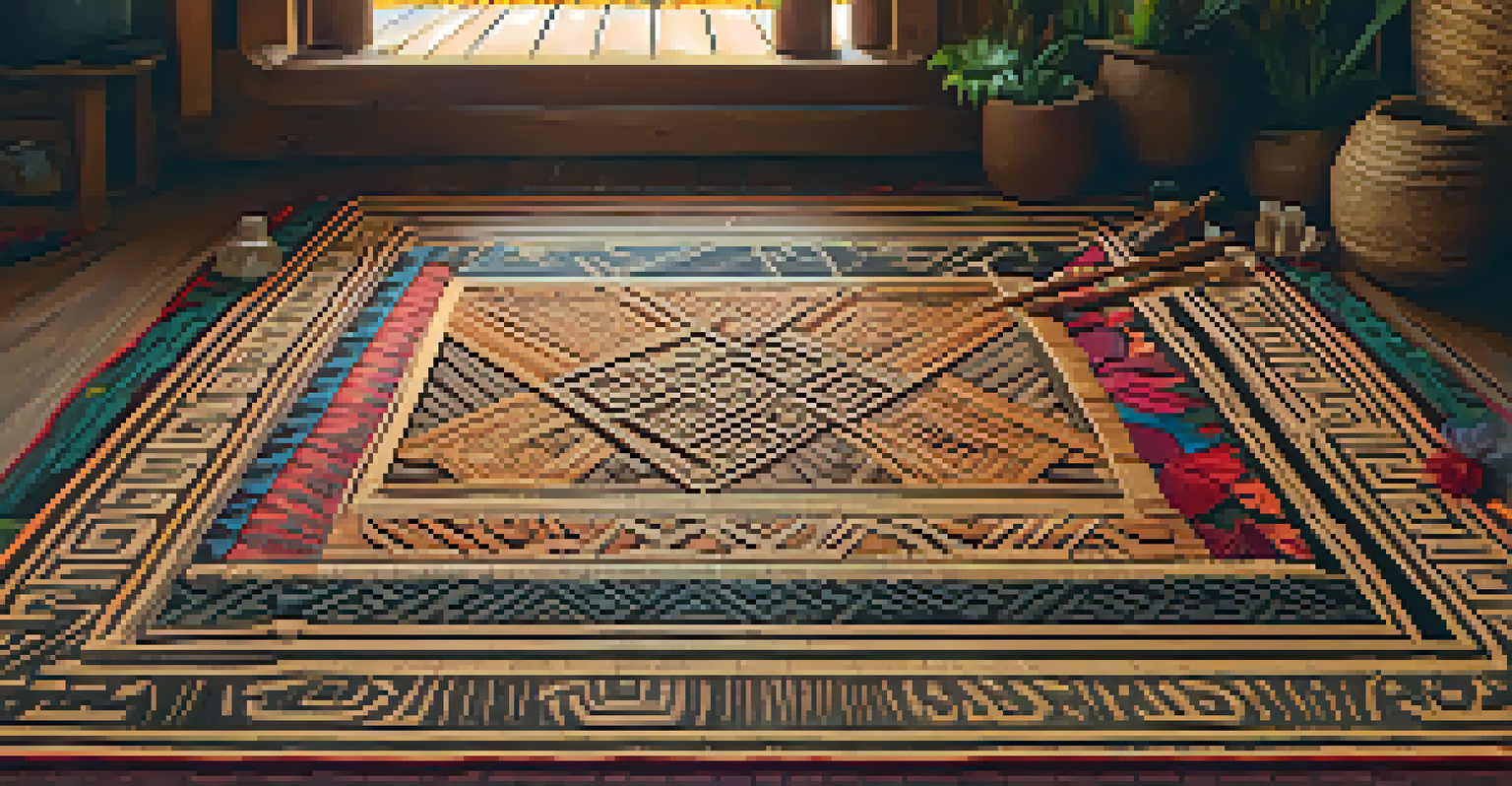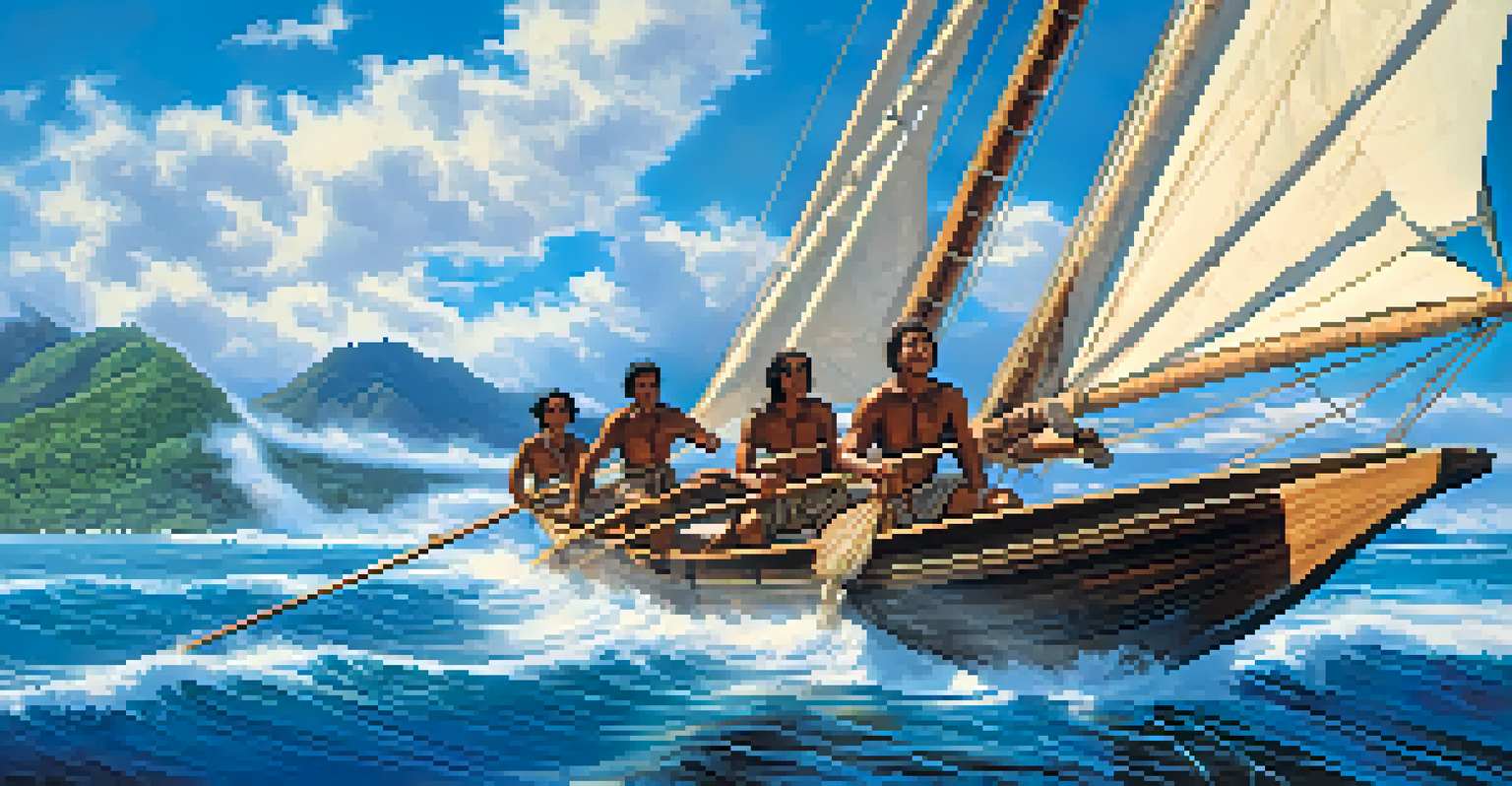Understanding Early Polynesian Settlements and Their Impact

The Origins of Polynesian Settlements in the Pacific
Polynesian settlements trace their roots back over a thousand years, originating from the regions surrounding Taiwan and Southeast Asia. As skilled navigators, the Polynesians utilized the stars, ocean currents, and wind patterns to journey across vast distances. This remarkable maritime culture enabled them to reach distant islands like Hawaii, New Zealand, and Easter Island, which were often thousands of miles apart. Their voyages not only showcased their navigational prowess but also laid the foundation for vibrant, interconnected societies across the Pacific.
The Pacific was not a barrier to be crossed, but a highway to be traveled.
The early Polynesians carried with them essential agricultural practices and knowledge, allowing them to adapt to diverse environments. They cultivated crops like taro, sweet potatoes, and yams, which became staples in their diet. In addition to farming, they also developed aquaculture techniques that helped sustain their communities. This blend of skills ensured that even on remote islands, they could thrive and build lasting settlements.
As these groups settled, they created complex social structures and established trade networks that spanned vast ocean distances. The sharing of resources, cultural practices, and technologies among these islands created a rich tapestry of Polynesian identity. Each island developed its own unique cultural traits while still maintaining connections to their broader Polynesian heritage.
Navigational Techniques of Early Polynesians
The navigational skills of early Polynesians were nothing short of extraordinary. They relied on a combination of celestial navigation, ocean swells, and bird behavior to guide them on their voyages. For instance, they could identify specific stars and constellations that indicated the direction of land, making their travels remarkably precise. This deep understanding of the natural world allowed them to explore and settle in the most isolated regions of the Pacific.

In addition to celestial navigation, Polynesians observed the behavior of waves and currents, which varied between islands. They learned to read the ocean like a book, using this knowledge to find safe passages and avoid dangerous waters. The ability to interpret these signs was crucial for successful long-distance voyages and significantly contributed to their ability to establish new settlements.
Polynesians: Expert Navigators
Early Polynesians showcased extraordinary navigational skills, using the stars, ocean currents, and bird behavior to explore vast distances across the Pacific.
This mastery of navigation not only facilitated settlement but also fostered a sense of community and shared identity among Polynesians. The stories of their voyages and the skills passed down through generations became integral parts of their culture. Today, this rich legacy of navigation continues to inspire and inform modern navigation practices.
Cultural Practices and Beliefs in Early Settlements
Polynesian culture is steeped in rich traditions, rituals, and beliefs that were integral to the survival of their communities. Each island developed its own unique practices, but common threads—such as respect for ancestors and the spiritual significance of nature—united them. For example, many Polynesians practiced ancestor worship, believing that their forebears influenced their daily lives and decisions. This deep-rooted spirituality was reflected in their art, dance, and oral traditions.
To navigate the sea is to understand the world; it is to be a part of the environment, not separate from it.
Traditional art forms, such as tattooing and weaving, played significant roles in expressing identity and status within these societies. Tattoos, known as 'ta moko' in some regions, were not merely decorative but conveyed important personal and ancestral stories. Similarly, weaving techniques were used to create clothing and ceremonial items, showcasing both artistic talent and cultural heritage.
Festivals and ceremonies were vital for reinforcing community bonds and cultural values. Events like the 'heiva' in Tahiti celebrated their history through music, dance, and competitive sports. These gatherings not only honored their cultural practices but also promoted social cohesion, ensuring that traditions were passed down through generations.
Agricultural Innovations in Polynesian Settlements
The agricultural practices developed by early Polynesians were crucial for the sustainability of their settlements. They cleverly adapted their farming techniques to suit the varying climates and resources of the islands they inhabited. For instance, on the volcanic soils of Hawaii, they developed terraced farming to maximize crop yields while minimizing soil erosion. This innovative approach allowed them to cultivate staple crops and sustain larger populations.
In addition to traditional farming, Polynesians practiced aquaculture, particularly in coastal areas. They constructed fish ponds and traps to harvest marine resources effectively, ensuring a steady supply of food. By managing both agricultural and aquatic resources, they created a balanced diet that supported their growing communities.
Sustainable Agricultural Practices
Innovative farming and aquaculture techniques allowed Polynesian communities to thrive on diverse islands while ensuring food security and encouraging trade.
These agricultural innovations not only enhanced food security but also fostered trade among the islands. Surplus crops and fish could be exchanged for goods and services, creating a vibrant economy that strengthened inter-island relationships. The legacy of these agricultural practices can still be seen in modern Polynesian societies, where sustainable farming methods are increasingly emphasized.
Trade Networks Among Polynesian Islands
Trade played a vital role in the development of early Polynesian societies, fostering connections and cultural exchange across the Pacific. The establishment of trade networks allowed for the transfer of goods such as food, tools, and materials, which enriched local economies. Canoes, specifically designed for long-distance journeys, were essential for transporting these goods and connecting different islands. This intricate web of trade was a testament to their navigational skills and resourcefulness.
In addition to tangible goods, trade facilitated the exchange of ideas and cultural practices. As merchants traveled from island to island, they brought new technologies, art forms, and agricultural techniques. This cultural diffusion enriched the lives of Polynesians and contributed to the development of unique regional identities while maintaining their overarching Polynesian heritage.
The legacy of these trade networks continues to resonate today, as many Polynesian communities still engage in traditional barter systems and celebrate their cultural connections. The relationships forged through trade laid the groundwork for future generations, emphasizing the importance of collaboration and shared resources in fostering strong, resilient societies.
Environmental Challenges Faced by Early Settlements
While early Polynesian settlements thrived, they also faced significant environmental challenges that tested their resilience. Natural disasters such as volcanic eruptions, tsunamis, and droughts could devastate communities and disrupt their way of life. For instance, the eruption of a volcano could destroy farmland and force inhabitants to relocate, prompting them to adapt quickly to new environments. Learning to navigate these challenges was crucial to their survival.
Polynesians developed a variety of strategies to mitigate the impact of environmental changes. They practiced sustainable resource management techniques, such as rotating crops and conserving freshwater supplies. This adaptability allowed them to maintain their populations and ensure food security despite the unpredictable nature of their surroundings.
Cultural Exchange Through Trade
Trade networks among Polynesian islands facilitated the exchange of goods and cultural practices, enriching local economies and reinforcing communal ties.
The lessons learned from these experiences have been passed down through generations, emphasizing the importance of environmental stewardship. Today, many Polynesian communities continue to advocate for sustainable practices, drawing on their rich history to address modern environmental challenges.
The Lasting Impact of Early Polynesian Settlements
The legacy of early Polynesian settlements is still evident in the culture, language, and traditions of contemporary Pacific Islanders. Many modern Polynesian societies retain aspects of their ancestral practices, from navigation techniques to agricultural methods. This continuity of culture highlights the resilience and adaptability of Polynesian peoples, who have maintained their identity despite external influences over centuries.
Furthermore, the profound understanding of the environment demonstrated by early Polynesians serves as a valuable model for sustainable living today. Their practices have garnered interest from ecologists and environmentalists, who recognize the importance of indigenous wisdom in addressing contemporary issues like climate change. By looking to the past, we can find solutions that respect both the land and the people who inhabit it.

In conclusion, the impacts of early Polynesian settlements extend far beyond their time, shaping not only their societies but also influencing global perspectives on sustainability and community. As we continue to learn from their history, it is essential to honor and preserve the rich cultural heritage that these settlements represent.